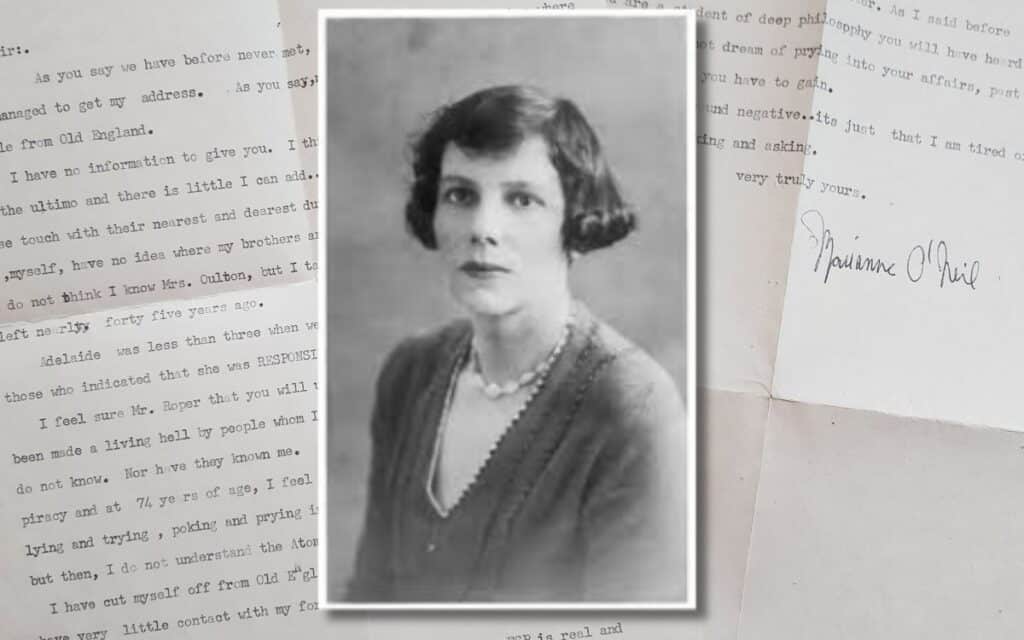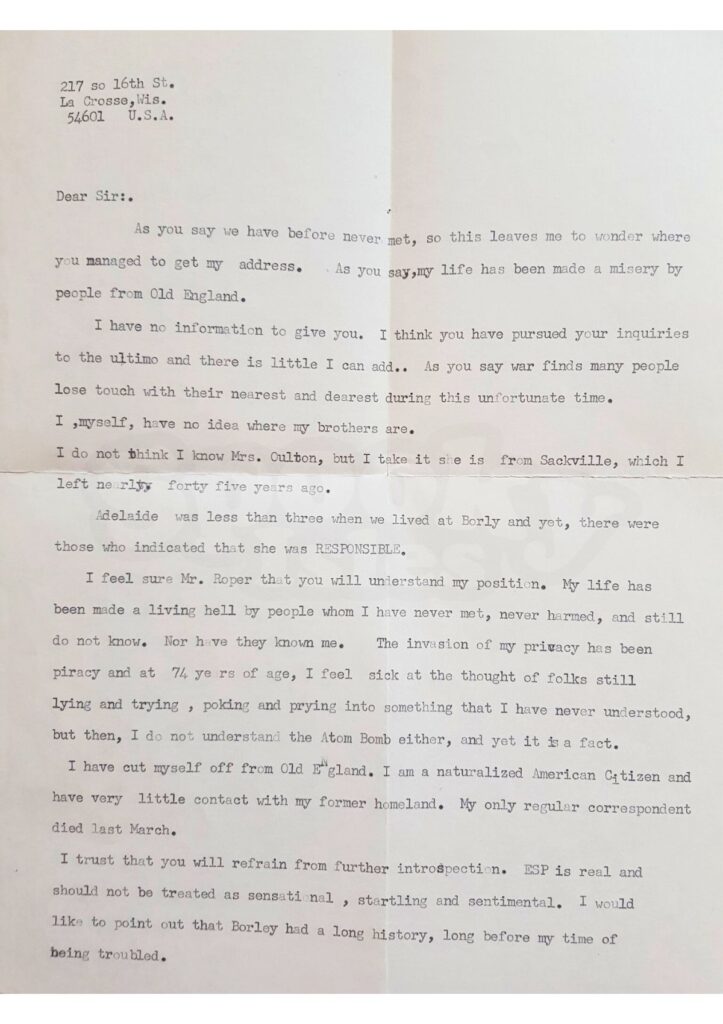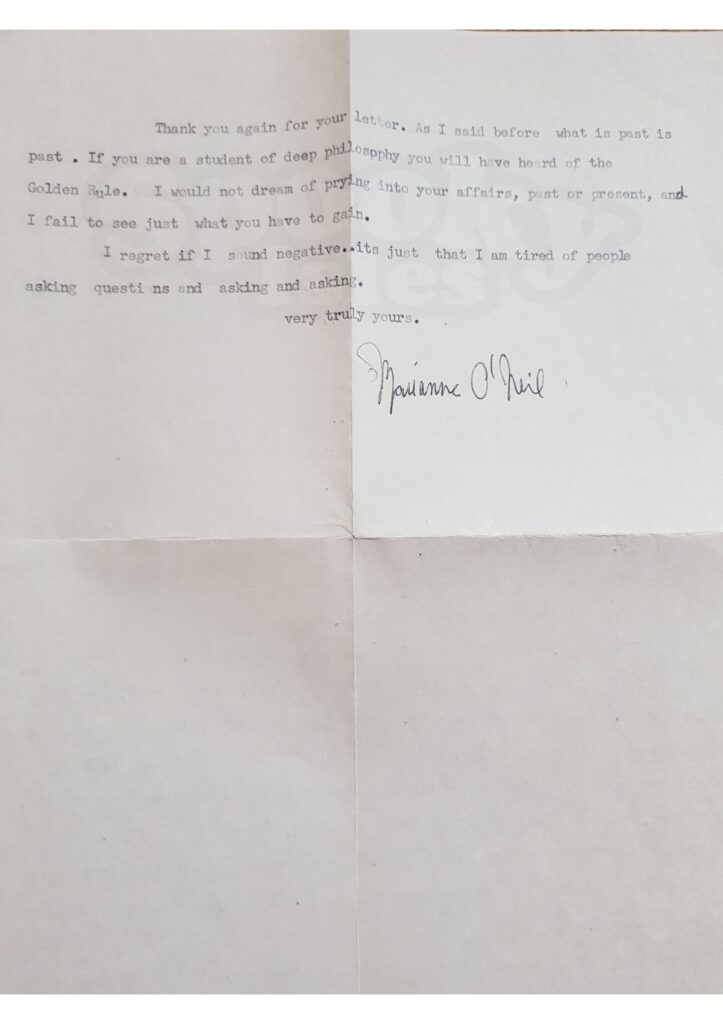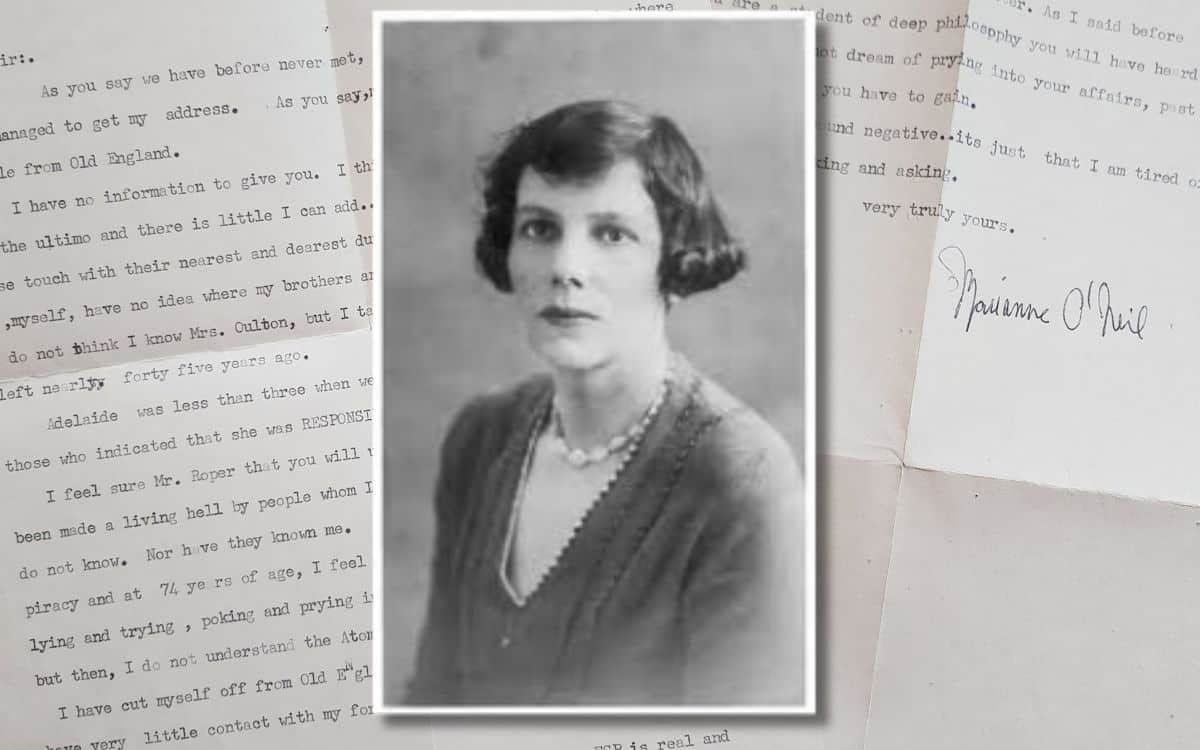Borley Rectory is known as the Most Haunted House in England. MARK HOPPER reveals a rare letter Marianne Foyster, a central participant in the case, in which she shares her thoughts on life after the haunting

Mary Anne Emily Rebecca Shaw was born on 26 January 1899 to Anne and William Shaw in Stockport, Cheshire. In 1914 she married a clerk, Harold Gifford Greenwood. Although she was only 15 she gave her age as 17 on the marriage certificate.
In 1915 they had a child together, Ian Greenwood, but only six weeks after his birth Harold left Marianne leaving Ian to be partially brought up by Marianne’s parents.
In 1922 Marianne married Reverend Lionel Algernon Foyster and in 1930 they moved into the dilapidated and rambling Borley Rectory.
Marianne was to become an integral part of the lore surrounding Borley Rectory, famously dubbed by legendary ghost hunter Harry Price as ‘the most haunted house in England’.
Around five years ago, a book dealer friend, Barry Roper, entrusted me with some research files that had been collected by his recently deceased brother Alan Roper.
Alan had been a well respected member of the Ghost Club for 50 years and more, a friend of Ghost Club president Peter Underwood and a tenacious researcher. In these files I found a letter written to Alan by Marianne O’Neil, nee Foyster.
The letter was undated but in it she gives her age as 74 which would make it from around 1974.
The Marianne Foyster Letter begins
Dear Sir
As you say we have before never met, so this leaves me to wonder where you managed to get my address. As you say, my life has been made a misery by people from Old England.
I have no information to give you. I think you have pursued your inquiries to the ultimo and there is little I can add. As you say war finds many people lose touch with their nearest and dearest during this unfortunate time.
The letter goes on to say:
Adelaide was less than three when we lived at Borley and yet, there were those who indicated that she was RESPONSIBLE.
The phenomena experienced by the Foyster’s during their tenancy at Borley was the most intense and remarkable recorded during the Rectory’s 122 year history.
In his 1946 book, The End of Borley Rectory, Harry Price wrote of his visit to the Rectory in 1931 during the Foyster incumbency: “Not only was there a recrudescence of all the old phenomena (in a much more violent form), but the poltergeists devised many new ‘manifestations,’ all intended to perplex, annoy, or injure the unfortunate residents of the Rectory’.
The Reverend Lionel Foyster wrote an unpublished book about his and Marianne’s experiences in Borley Rectory, Fifteen Months in a Haunted House. The phenomena listed are wide ranging and intense, from classic poltergeist stone throwing, laundry being removed from cupboards and strewn around the Rectory and apports such as small piles of stones appearing on Marianne’s pillow in the morning.
She also reported seeing “a monstrosity” which touched her shoulder with “an iron like touch”. Famously, messages also appeared in pencil on slips of paper and on the walls of the Rectory asking Marianne for help and exhorting her to “light mass, prayers”.
The letter goes on:
I feel sure Mr Roper that you will understand my position. My life has been made a living hell by people whom I have never met, never harmed, and still do not know. Nor have they known me. The invasion of my privacy has been piracy and at 74 years of age, I feel sick at the thought of folks still lying and trying, poking and prying into something that I have never understood, but then, I do not understand the Atom Bomb either, and yet it is a fact.
I have cut myself off from Old England. I am a naturalised American Citizen and have very little contact with my former homeland. My only regular correspondent died last March.
I trust that you will refrain from further introspection. ESP is real and should not be treated as sensational, startling and sentimental. I would like to point out that Borley had a long history, long before my time of being troubled.
Marianne here indicates a knowledge of the Rectory’s history of hauntings which was indeed long.
History of Hauntings at Borley Rectory
In the early 1900s, daughters of the Reverend Henry ‘Harry’ Bull reported seeing a ghostly nun on the grounds of the Rectory. Harry Bull himself would often sit in the Summer House on the grounds waiting to catch a glimpse of the ghostly nun.
On Bull’s death in 1927, the Reverend Guy Eric Smith and his wife Mabel moved into the Rectory. They were soon experiencing poltergeist phenomena such as mysterious sounds of footsteps, throwing of stones and the ringing of servant bells despite them being disconnected. Appealing for help, it was at this time that Harry Price became involved in his investigation of the haunting of Borley Rectory.
The letter concludes:
Thank you again for your letter. As I said before what is past is past. If you are a student of deep philosophy, you will have heard of the Golden Rule. I would not dream of prying into your affairs, past or present, and I fail to see just what you have to gain.
I regret if I sound negative.. its just that I am tired of people asking me questions and asking and asking.
Very truly yours.
Marianne O’Neil
The ‘Golden Rule’ which Marianne refers to is of course the principle of treating others as you would expect to be treated yourself. Marianne seems to have lived up to this ideal admirably in her later years, being awarded the Pope’s Award for ‘devoted services to humanity’. She died a well respected member of her community in 1992 at the age of 93 after devoting much of her time to the care of the elderly.
Image of The Marianne Foyster Letter


Tells us your thoughts on this letter and the Borley Rectory haunting in the comments section below!



